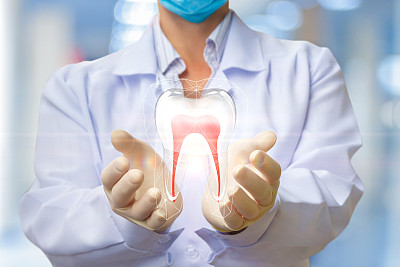A Comprehensive Guide to Extract a Tooth Safely and Effectively for Optimal Dental Health
Summary: Extracting a tooth is a significant dental procedure that can seem daunting. Yet, with proper techniques and guidance, it can be performed safely and effectively, ensuring optimal dental health. This article lays out a comprehensive guide that covers the essentials of tooth extraction, including preparation, techniques, post-extraction care, and when to consult a dentist. Each section is designed to equip you with the knowledge to understand the process, anticipate any challenges, and ensure a smooth recovery. By following these recommendations, patients can ease their anxiety about tooth extractions and promote long-term dental well-being.
1. Preparing for Tooth Extraction

The preparation stage is crucial for a successful tooth extraction. First and foremost, consultation with a qualified dentist is essential. During this visit, the dentist assesses the tooths condition and recommends whether extraction is necessary. They will also discuss your medical history to identify any potential risks that could affect the procedure.
Once you have received the go-ahead, ensure you follow your dentists instructions regarding pre-operative care. This might include avoiding certain medications, particularly blood thinners, and fasting if sedation is needed. A clear understanding of the procedure can significantly reduce your anxiety.
Additionally, it is wise to arrange for post-extraction transport, especially if sedation is used. Having someone to help you after the procedure ensures that you can rest without unnecessary stress, facilitating a quicker recovery.
2. Techniques for Safe Tooth Extraction
There are various techniques employed during a tooth extraction, largely depending on the tooths condition and position in the mouth. Simple extractions involve teeth that are fully erupted and accessible. This process typically requires local anesthesia and involves the dentist using specialized tools to gently wiggle the tooth free.
On the other hand, surgical extractions are more complex and are performed on teeth that are broken beneath the gum line or have not fully erupted, such as wisdom teeth. This procedure may involve making an incision in the gum to remove bone and tissue surrounding the tooth.
Regardless of the technique used, strict adherence to safety protocols ensures that the procedure is effective. Your dentist will maintain a sterile environment and take care to minimize your discomfort throughout the process using proper anesthesia and sedation as required.
3. Post-Extraction Care and Recovery
Post-extraction care is vital for a smooth recovery and optimal dental health. One of the first steps is managing bleeding, which is common immediately following the procedure. Your dentist will provide gauze to bite down on, helping to form a blood clot and minimize bleeding.
Following the initial recovery period, sticking to a soft-food diet is highly recommended for up to a week. Foods like yogurt, applesauce, and smoothies can provide nourishment without aggravating the extraction site. Additionally, avoiding strenuous activity helps prevent complications.
Monitoring the extraction site and practicing good oral hygiene are essential aspects of post-operative care. Gently rinsing with warm salt water can aid healing, but its best to avoid vigorous rinsing for the first few days. If you notice any signs of infection or unusual pain, you should contact your dentist promptly.
4. Knowing When to Consult a Dentist
Understanding when to seek professional advice is crucial for optimal dental health. If the extraction site becomes increasingly painful or shows signs of infection such as swelling, pus discharge, or fever, immediate consultation is necessary. These symptoms can be indicators of complications that require additional treatment.
Moreover, if bleeding persists beyond the first few hours post-extraction, it is important to reach out to your dentist. Prolonged bleeding can signify that the blood clot has been dislodged, leading to a condition known as dry socket, which can be quite painful.
Regular follow-up appointments are also a component of effective dental health. These visits allow the dentist to monitor the healing process and address any concerns that may arise after the procedure. Keeping an open line of communication with your dental professional can lead to a more successful recovery.
Summary:
The journey of tooth extraction can be navigated smoothly with the right knowledge and preparation. From ensuring proper preparation and using safe techniques to looking after oneself post-extraction and recognizing when professional help is needed, each step plays a critical role in the overall process.
By adhering to these guidelines, you can turn a potentially daunting experience into a simple and effective way to maintain your dental health. Remember to consult with your dentist for personalized advice.
This article is compiled by Vickong Dental and the content is for reference only


